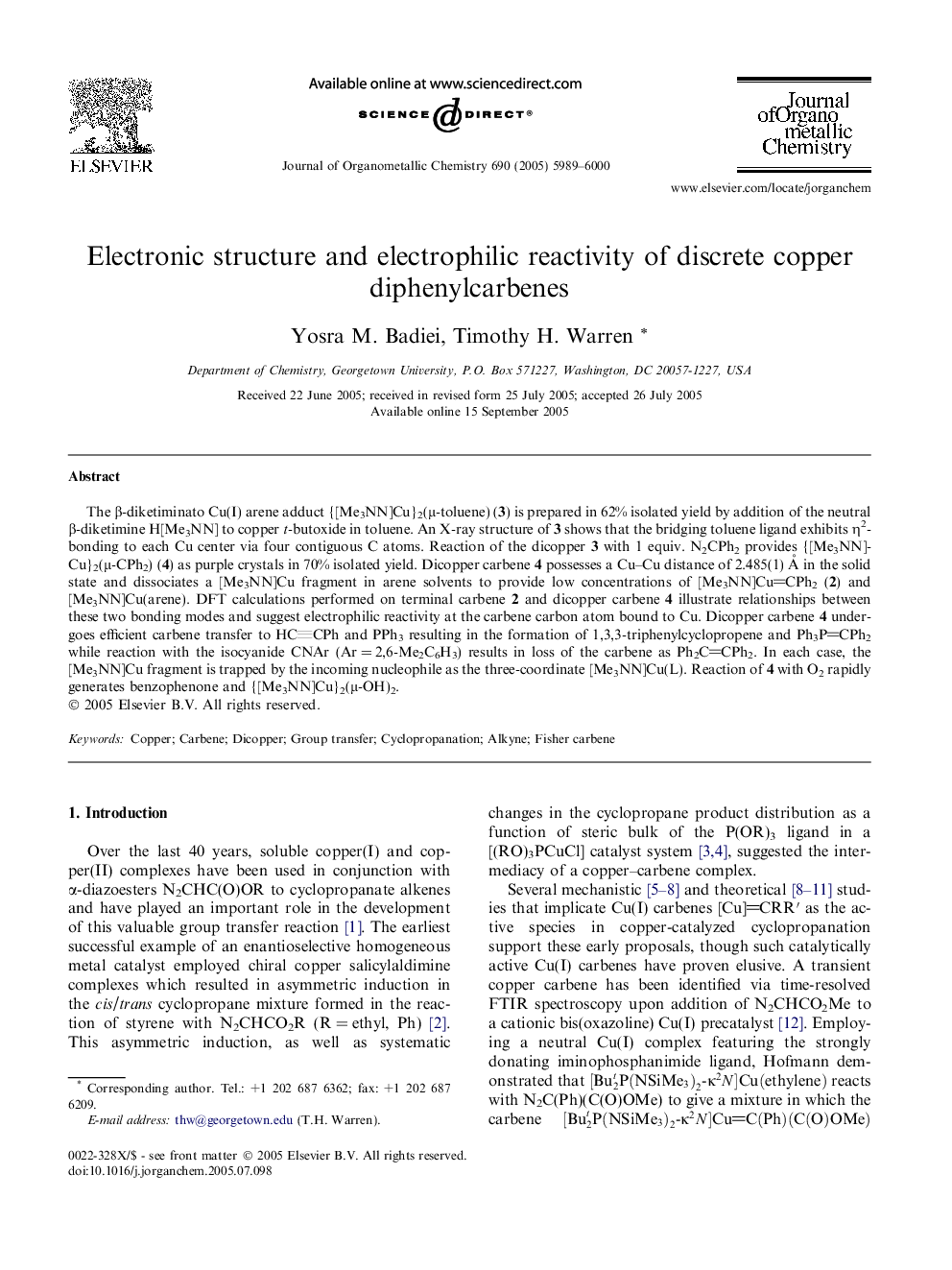| Article ID | Journal | Published Year | Pages | File Type |
|---|---|---|---|---|
| 1326115 | Journal of Organometallic Chemistry | 2005 | 12 Pages |
The β-diketiminato Cu(I) arene adduct {[Me3NN]Cu}2(μ-toluene) (3) is prepared in 62% isolated yield by addition of the neutral β-diketimine H[Me3NN] to copper t-butoxide in toluene. An X-ray structure of 3 shows that the bridging toluene ligand exhibits η2-bonding to each Cu center via four contiguous C atoms. Reaction of the dicopper 3 with 1 equiv. N2CPh2 provides {[Me3NN]Cu}2(μ-CPh2) (4) as purple crystals in 70% isolated yield. Dicopper carbene 4 possesses a Cu–Cu distance of 2.485(1) Å in the solid state and dissociates a [Me3NN]Cu fragment in arene solvents to provide low concentrations of [Me3NN]CuCPh2 (2) and [Me3NN]Cu(arene). DFT calculations performed on terminal carbene 2 and dicopper carbene 4 illustrate relationships between these two bonding modes and suggest electrophilic reactivity at the carbene carbon atom bound to Cu. Dicopper carbene 4 undergoes efficient carbene transfer to HCCPh and PPh3 resulting in the formation of 1,3,3-triphenylcyclopropene and Ph3PCPh2 while reaction with the isocyanide CNAr (Ar = 2,6-Me2C6H3) results in loss of the carbene as Ph2CCPh2. In each case, the [Me3NN]Cu fragment is trapped by the incoming nucleophile as the three-coordinate [Me3NN]Cu(L). Reaction of 4 with O2 rapidly generates benzophenone and {[Me3NN]Cu}2(μ-OH)2.
Graphical abstractThe synthesis and X-ray structure of the β-diketiminato dicopper carbene {[Me3NN]Cu}2(μ-CPh2) (4) are presented. DFT calculations indicate electrophilic character at the carbene C atom, borne out in group transfer reactions to phenylacetylene and triphenylphosphine. In contrast, loss of Ph2CCPh2 is induced by isonitrile coordination while reaction with O2 yields benzophenone.Figure optionsDownload full-size imageDownload as PowerPoint slide
